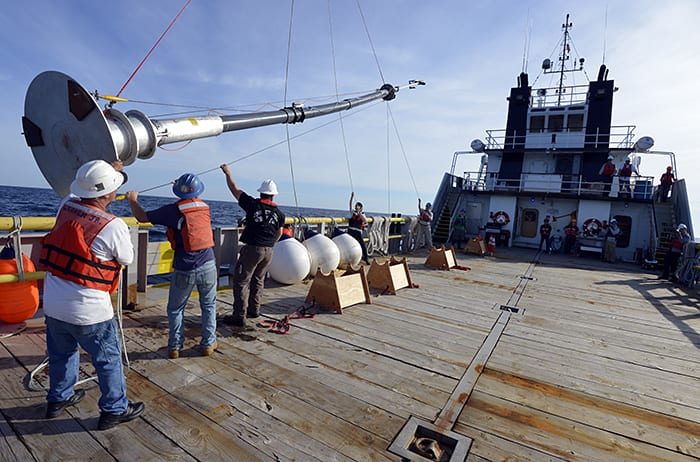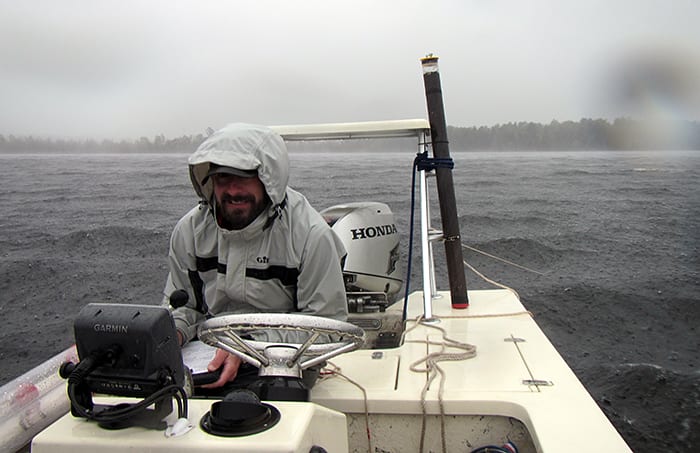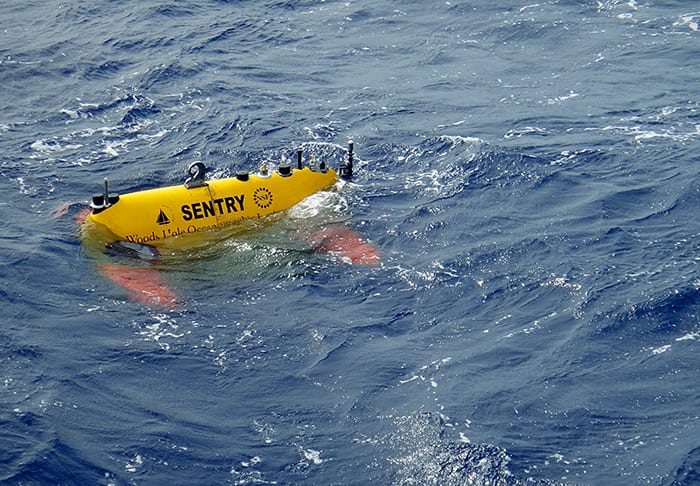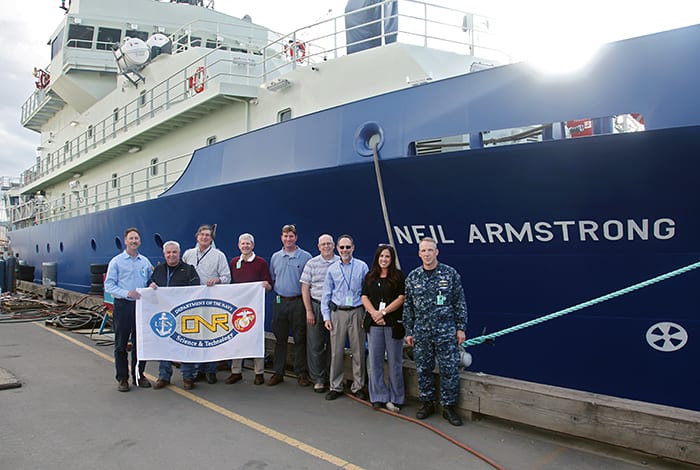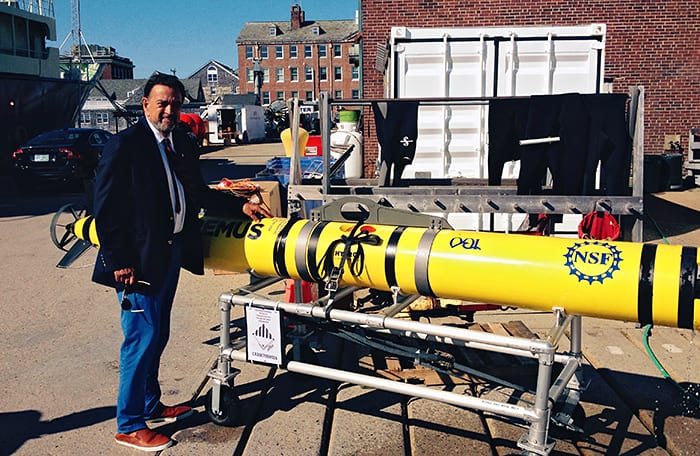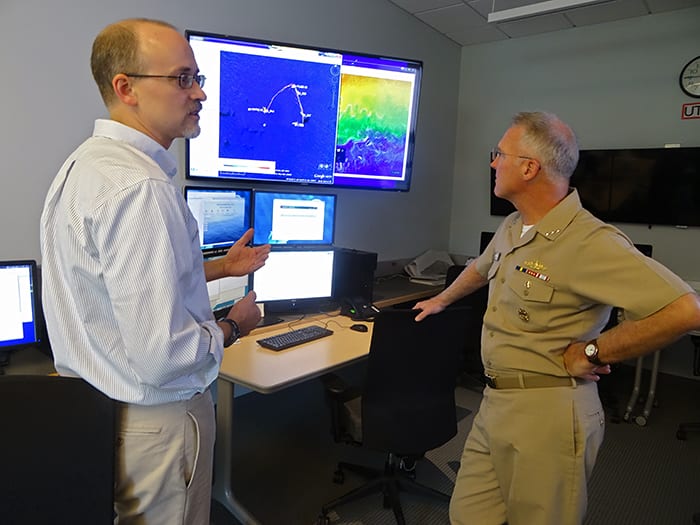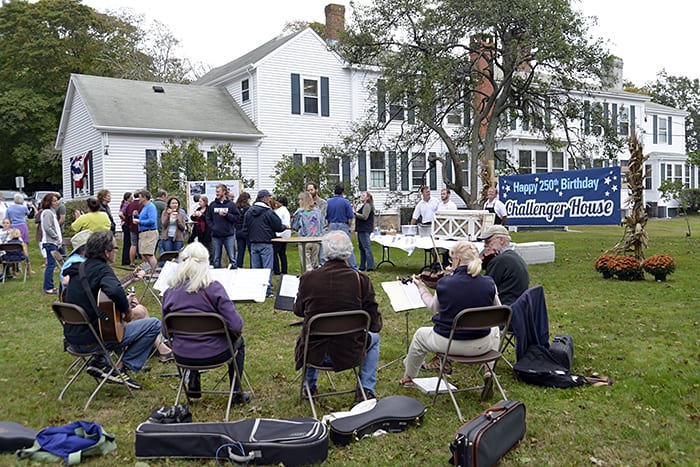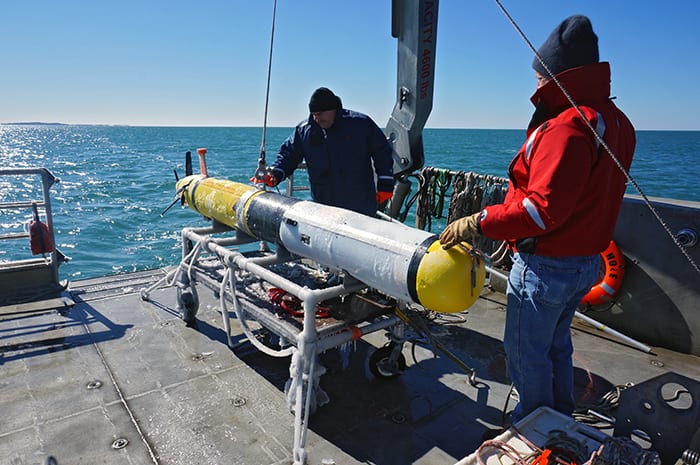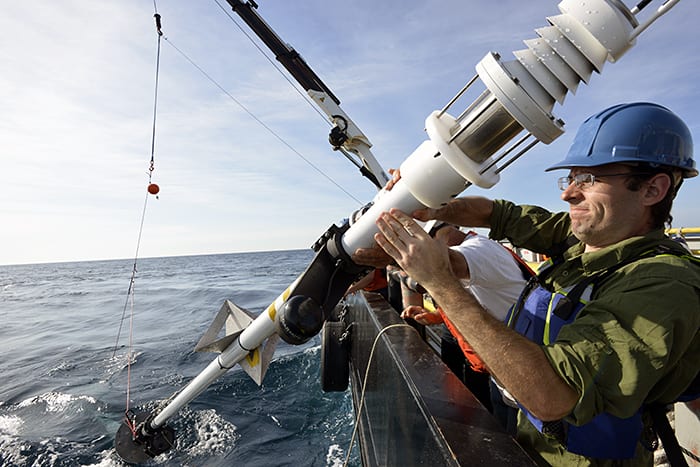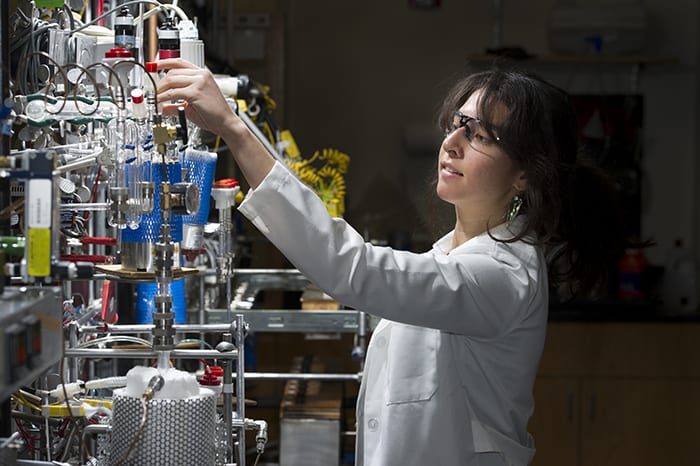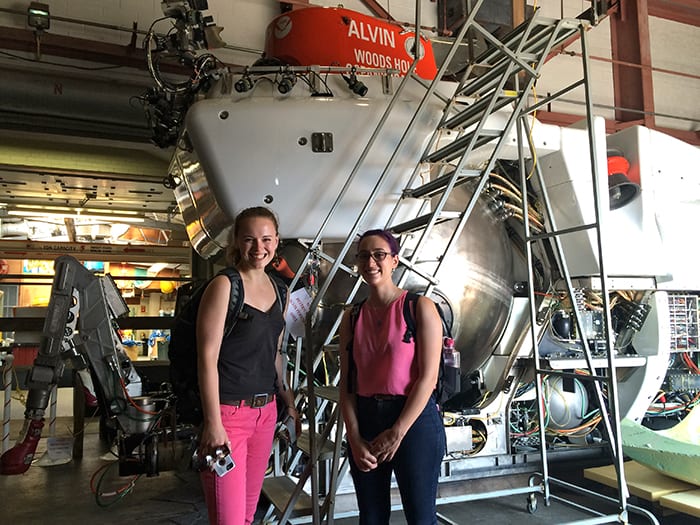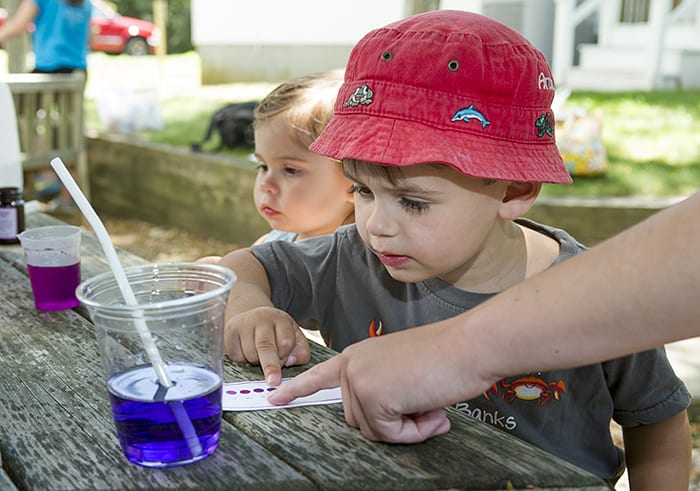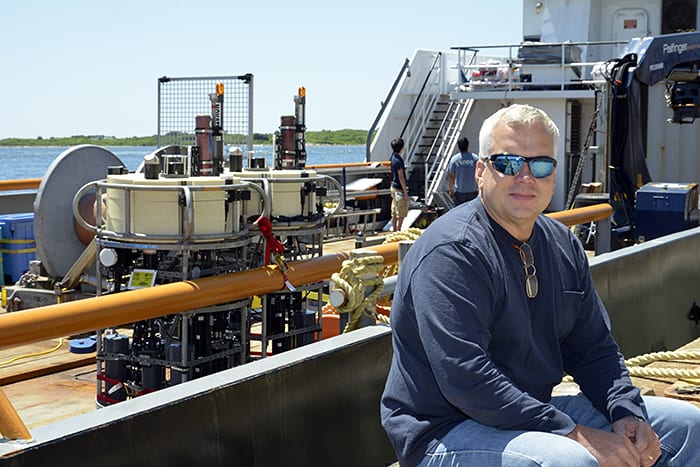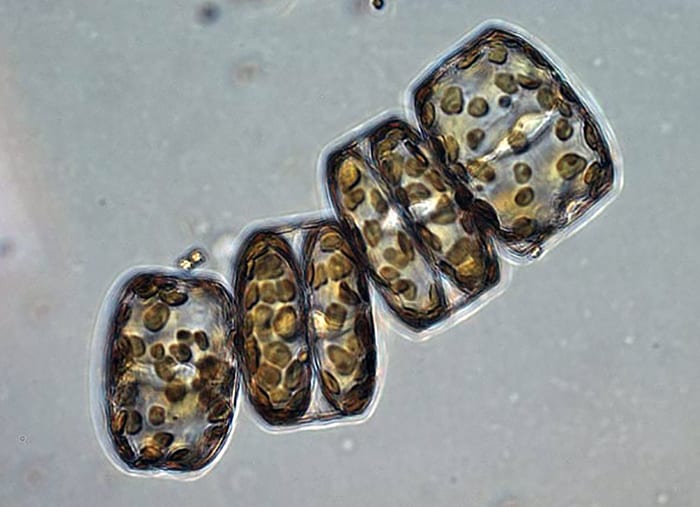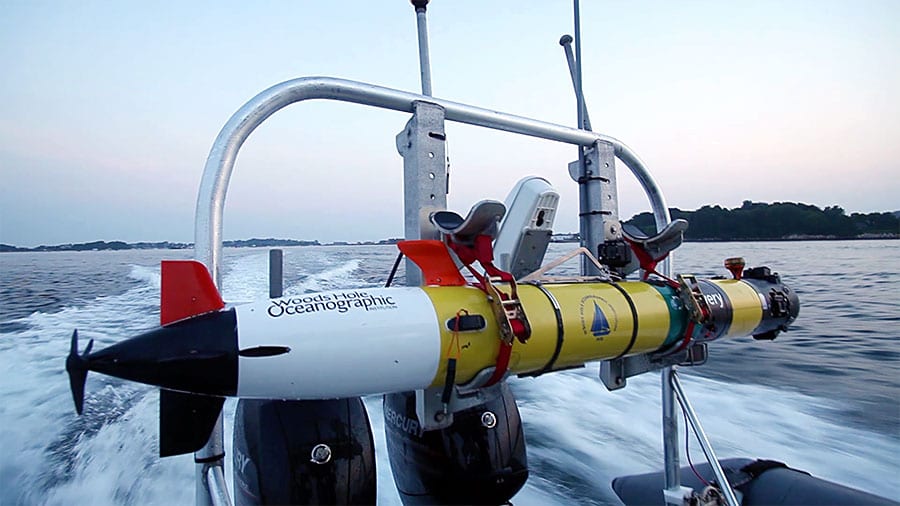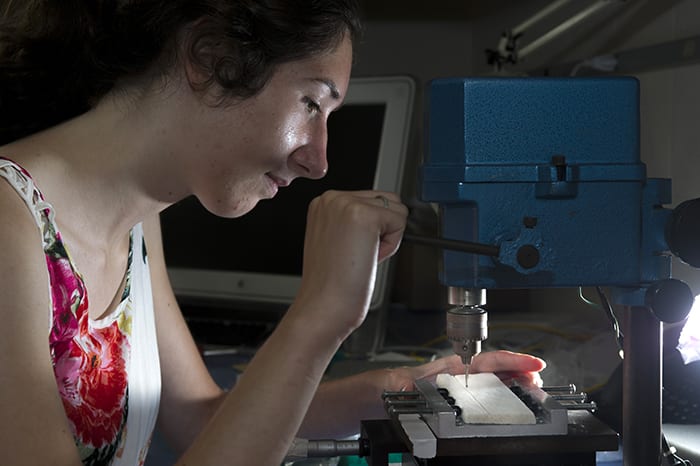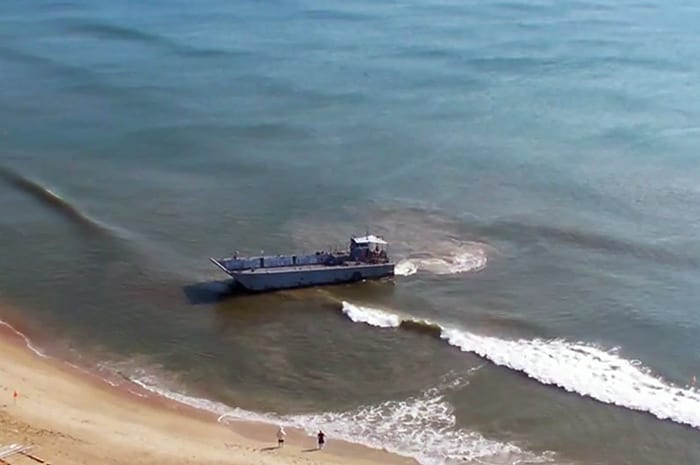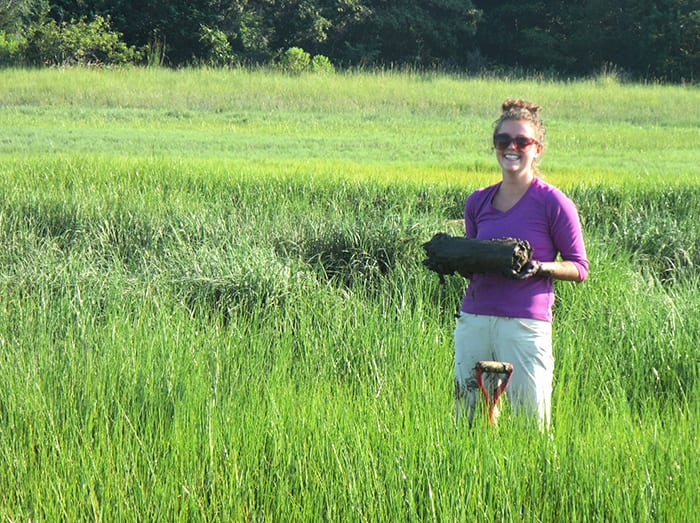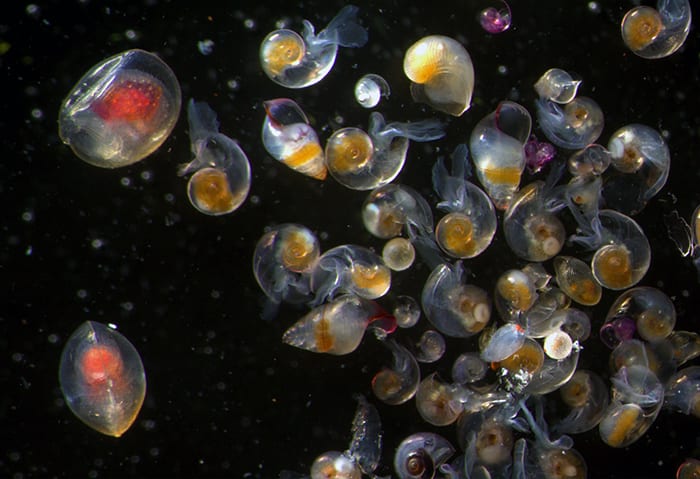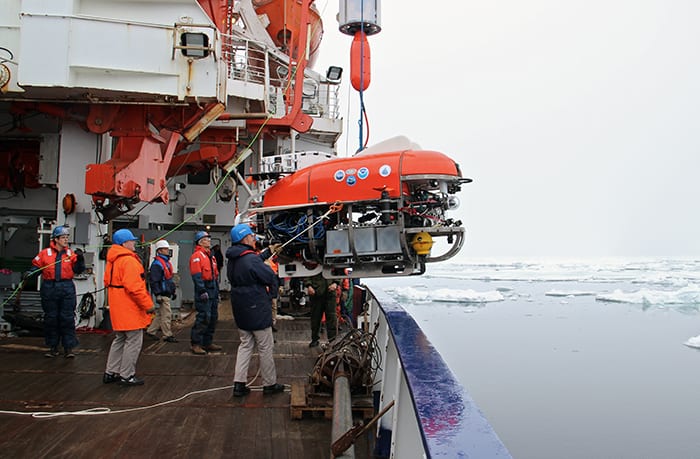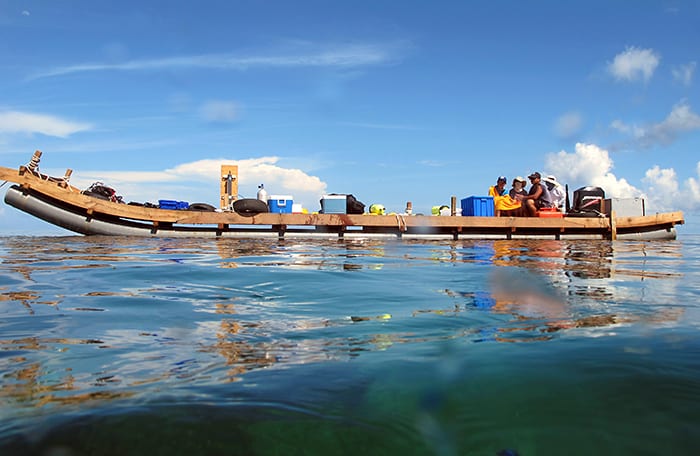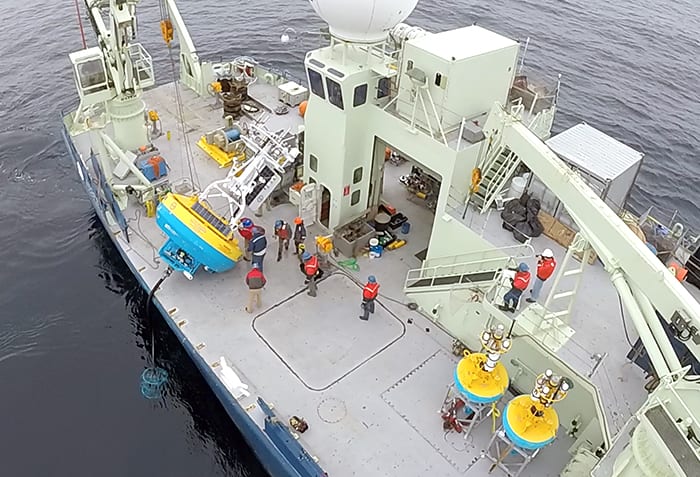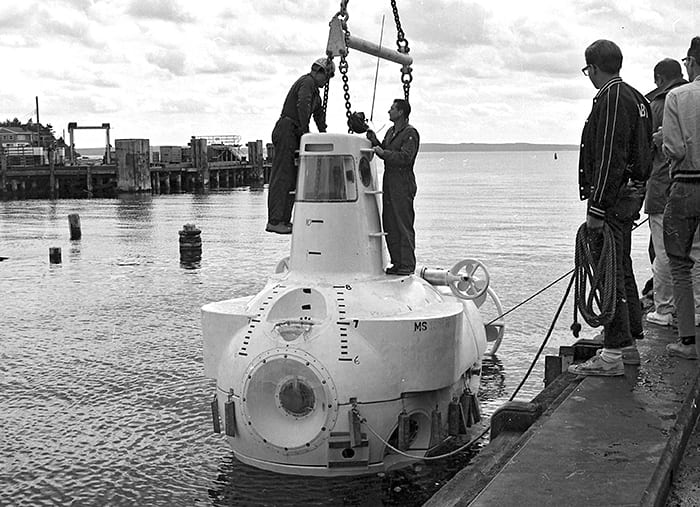Multimedia Items
X-change at sea
WHOI researchers and engineers deployed an X-Spar (expendable spar) buoy for sea trials in June 2015. Made of low-cost components like commercial plastic tubing and modified, commonplace sensors, X-Spar buoys…
Read MoreRain, Rain
WHOI biologist Joel Llopiz finds little shelter in the middle of a lake during a recent field trip to Maine. Llopiz and chemist Amanda Spivak have been studying five lakes that have had…
Read MoreTreading Water
The autonomous underwater vehicle Sentry awaits recovery during the MESH (Mapping, Exploration, Sampling at Havre) research cruise in the spring of 2015. Capable of diving and surveying the seafloor at depths…
Read MoreA Giant Leap for Oceanography
Following completion of successful acceptance trials, the nation’s newest research vessel, the Neil Armstrong, was officially turned over by the U.S. Navy on September 23, 2015, to WHOI, which will…
Read MoreVIP Visit
WHOI gets its share of visits from politicians and dignitaries over the course of the year, but few with this many titles on his CV. This summer, former Congressman, New…
Read MoreBriefing the Admiral
During a recent visit, Vice Admiral Tom Rowden USN is briefed by senior engineer Peter Brickley about glider and Ocean Observatory Initiative (OOI) operations in the Coleman and Susan Burke…
Read MoreHappy 250th
WHOI recently celebrated a special anniversary on the Woods Hole campus—the 250th birthday of Challenger House. The WHOI “Tunes at Noon” ensemble provided entertainment and Smitty’s Ice Cream provided the…
Read MoreSUPR REMUS
WHOI researchers and engineers recently developed a new autonomous system designed to sample small planktonic larvae in coastal ocean waters and tested it this past winter in waters near Woods…
Read MoreThe Good Fight
WHOI engineer Larry George keeps the top of an expendable spar buoy (X-Spar) away from the side of the ship during a test deployment this summer. The X-Spar is a…
Read MoreCarbon Capture
MIT-WHOI Joint Program student Sarah Rosengard converts organic carbon to carbon dioxide by slowly increasing its temperature from room temperature to 800°C (1,470°F) at WHOI’s National Ocean Sciences Accelerator Mass Spectrometry (NOSAMS)…
Read MoreClass of 2015
Megan Behnke, a senior from St. Olaf College (left), and Lina Davidson, a junior from Barnard College got up close with the human-occupied submersible Alvin during its current maintenance period in Woods…
Read MoreScience is Fun
Two young visitors enjoyed learning about ocean acidification at the WHOI Ocean Science Exhibit Center during a Splash Lab this summer. With exhibits geared for all ages the Center is…
Read MorePioneering Array
WHOI’s Ocean Observatory Initiative (OOI) Program Manager, Paul Matthias, sits in front of two coastal surface-piercing profilers. Deployment of the instruments recently marked the completion the six-year design and build…
Read MoreMarine Infochemicals
In a recent study, WHOI scientists found that single-celled marine phytoplankton like these Melosira sp. can release “infochemicals” that signal marine bacteria to rev up their metabolisms and decompose phytoplankton…
Read MoreTurtleCam
Coral Clockworks
Corals put down growth layers, similar to tree rings, that record the environmental conditions they grew in. Using core samples, scientists can learn about current health conditions on a reef…
Read MoreRip-roaring Channel
Rip currents pose a threat to public safety, so officials are interested in ways to predict when and where they form, but it’s difficult to study the dynamic and intermittent…
Read MoreOutstanding in Her Field
Maggie Capooci from the University of Scranton spent her time as a WHOI Summer Student Fellow evaluating how marsh ecosystems respond to restoration of tidal connectivity. Under-sized culverts beneath roads…
Read MoreOn Top of His Work
WHOI engineer Jared Schwartz installed instruments on a Pioneer Array surface buoy tower prior to the buoy being deployed on the continental shelf and slope south of New England. The…
Read MoreSea Butterflies
These marine snails are called pteropods (from the Greek words meaning “wing foot”) or “sea butterflies” because of their winglike swimming appendages. Masses of pteropods drift with currents in the…
Read MoreSeeing Under Sea Ice
The Nereid Under Ice (NUI) vehicle is launched from the Alfred Wegener Institute’s ice-breaker Polarstern during an expedition in July of 2014. NUI is remotely operated by pilots aboard a surface…
Read MoreMakeshift Lab
During a trip to Dongsha Atoll south of Taiwan in the South China Sea last year, researchers from Anne Cohen’s lab fashioned a floating lab out of wooden planks and…
Read MoreBuoy Overboard
A surface buoy is prepared for deployment from the R/V Knorr. The buoy contains communications equipment and serves as flotation for a Coastal Surface Mooring in the Pioneer Array. The…
Read MoreEarly Alvin
In the summer of 1964 the original DSV Alvin underwent dockside water tests in Woods Hole. Marvin McCamis, one of the original Alvin pilots (second from left) joined the Institution staff…
Read More
